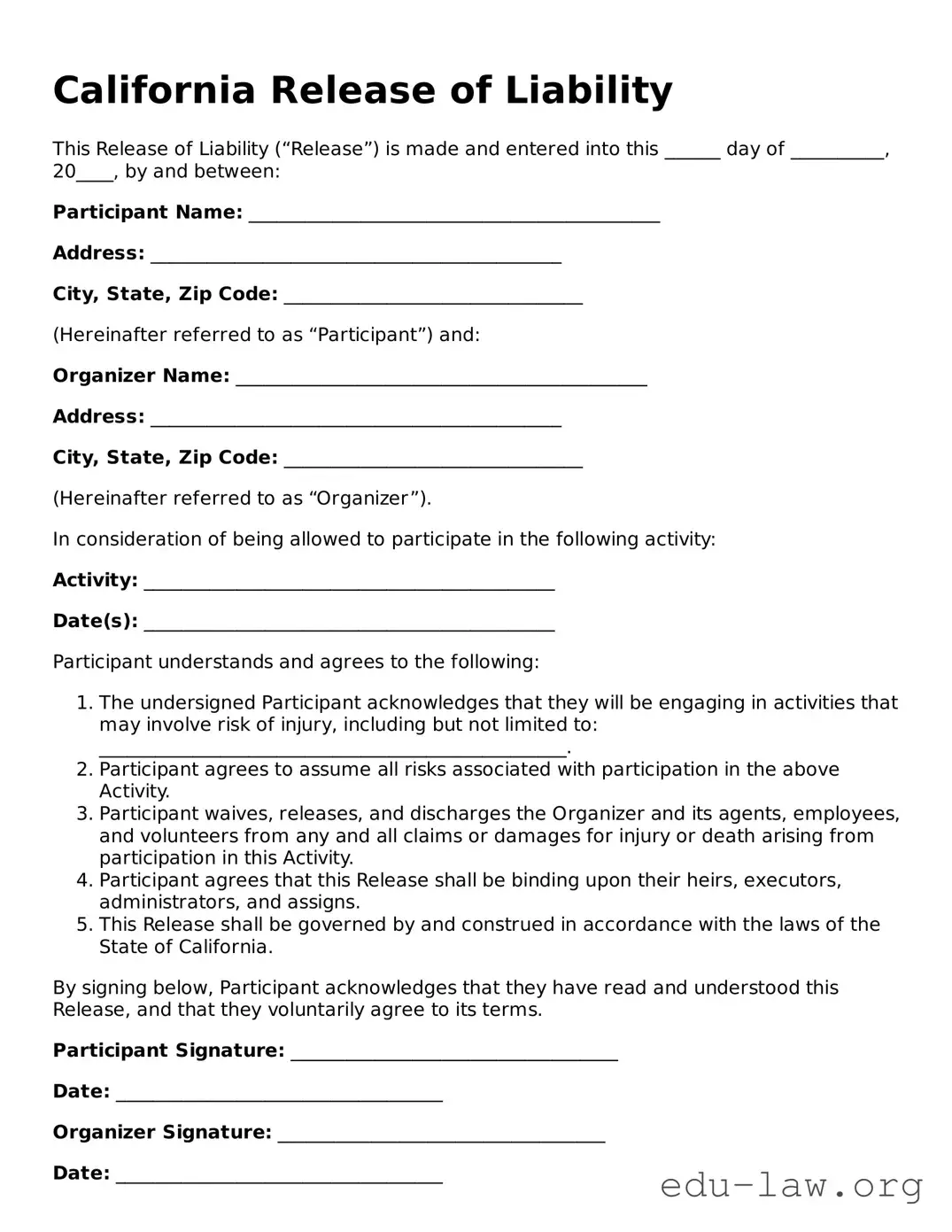California Release of Liability
This Release of Liability (“Release”) is made and entered into this ______ day of __________, 20____, by and between:
Participant Name: ____________________________________________
Address: ____________________________________________
City, State, Zip Code: ________________________________
(Hereinafter referred to as “Participant”) and:
Organizer Name: ____________________________________________
Address: ____________________________________________
City, State, Zip Code: ________________________________
(Hereinafter referred to as “Organizer”).
In consideration of being allowed to participate in the following activity:
Activity: ____________________________________________
Date(s): ____________________________________________
Participant understands and agrees to the following:
- The undersigned Participant acknowledges that they will be engaging in activities that may involve risk of injury, including but not limited to: __________________________________________________.
- Participant agrees to assume all risks associated with participation in the above Activity.
- Participant waives, releases, and discharges the Organizer and its agents, employees, and volunteers from any and all claims or damages for injury or death arising from participation in this Activity.
- Participant agrees that this Release shall be binding upon their heirs, executors, administrators, and assigns.
- This Release shall be governed by and construed in accordance with the laws of the State of California.
By signing below, Participant acknowledges that they have read and understood this Release, and that they voluntarily agree to its terms.
Participant Signature: ___________________________________
Date: ___________________________________
Organizer Signature: ___________________________________
Date: ___________________________________
